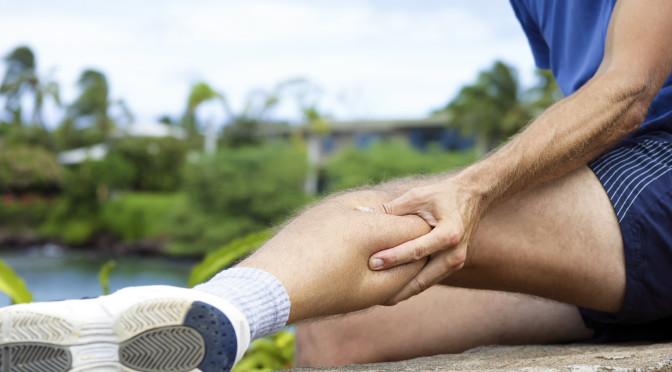What is a Muscle Cramp (Charlie Horse)?
A muscle cramp is a painful situation where your muscle involuntarily contracts. They are also known as Charlie Horses or muscle spasms. Many people tend to get them while running or even during late night sleeping.
Symptoms of a Muscle Cramp
In most cases the muscle will feel tight and cause extreme pain. Movement or flexing of the muscle hurts and even lightly touching it can induce more pain.
What are the causes and risks of the condition?
Inflexible muscles are more likely to cramp than flexible muscles. This is why it is important to stretch before extreme exercise as cramps not only hit during exercise but even after — i.e. the dreaded night time calf cramp. Overexertion and muscle fatigue also contribute to cramping. Excess sweating or dehydration can deplete minerals in the body. These minerals are important for good muscle function and include sodium, potassium, calcium, magnesium, and phosphorus. Medications like diuretics or water pills can also lead to cramping due to loss of sodium and potassium.
Other situations can contribute to muscle cramping.
Individuals with one leg longer than the other are more prone to cramps.
Running with a high level of rolling in of the foot or too much rolling out of the foot.
Strain on the calf muscles such as wearing high heel shoes can cause cramping.
Poor blood supply to leg muscles caused by smoking and atherosclerosis (hardening of the arteries) can cause a type of calf pain called claudication.
The common muscle cramp lasts a few seconds to minutes and does not carry any risk of other long-term medical problems.
What can be done to prevent muscle cramps?
Improve flexibility by stretching you calves and other leg muscles. This will help prevent the condition and can also help prevent injuries during exercise as well as other strains on muscles.
If you get night calf craps, you should:
- Sleep on you sides.
- Sleep with toes and feet pointed.
- Leave sheets and blankets loose as bending the toes down can cause a cramp.
- Reduce the risk of mineral deficiencies by eating fruits and vegetables during the day.
- Stay hydrated! Drink plenty of water before, during and after exercise to prevent dehydration, especially during hot weather.
- Comfortable shoes with good arch support to helps prevent cramps and can even prevent shin splints.
What do I do during a muscle CRAMP!?
- Stretch it out! Grasp the muscle. With your other hand pull back on your toes and foot.
- Point toes upward to help relieve the spasm.
- Walking can help. Walk about with all or the majority of your body weight on your heels.
- Use ice packs for severe cases. This reduces blood flow to the muscles and relaxes them.
- If exercising, drink water to prevent or correct dehydration.
What happens after the cramp is gone?
Once the cramp has been remedied you can normally go back to doing the activity again. If the muscle cramping is happening repeatedly, it is advised that the individual should see a doctor and get a professional opinion.

Thanks will try these suggestions.